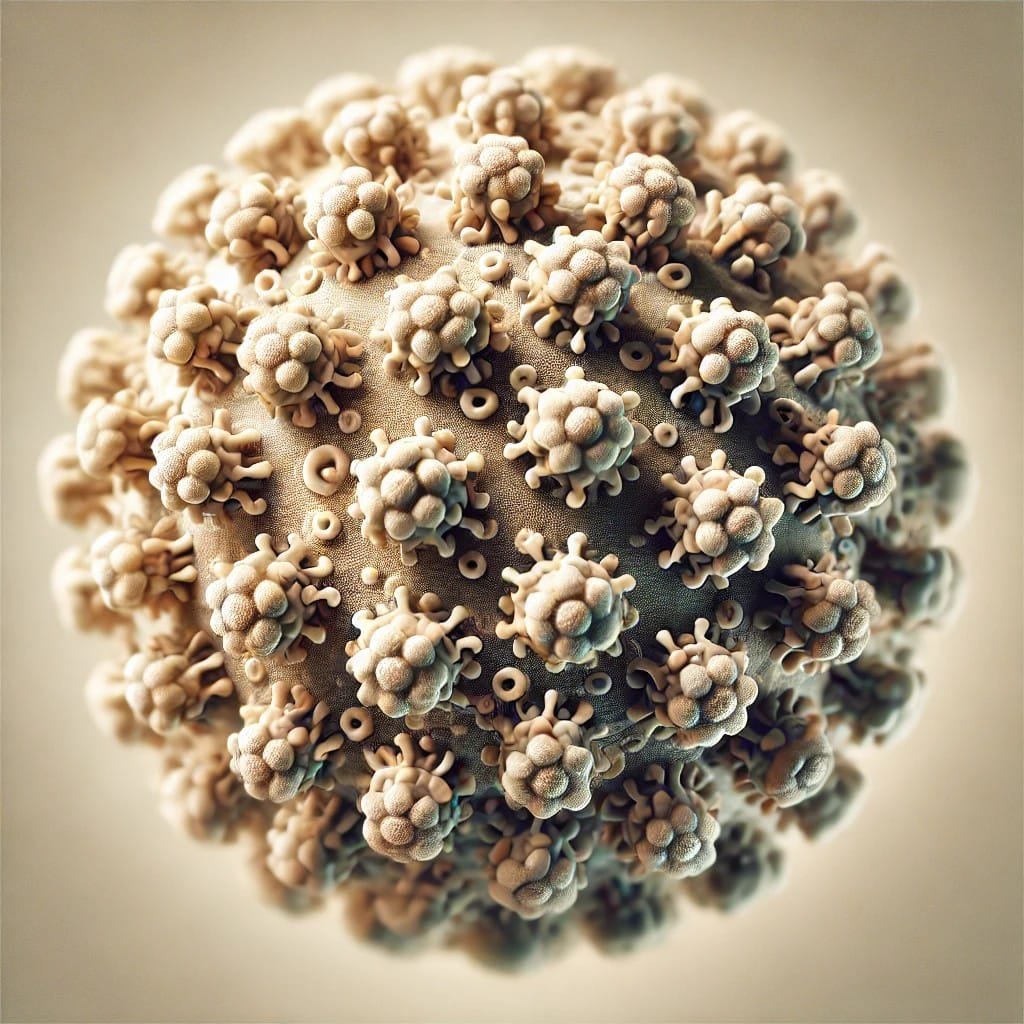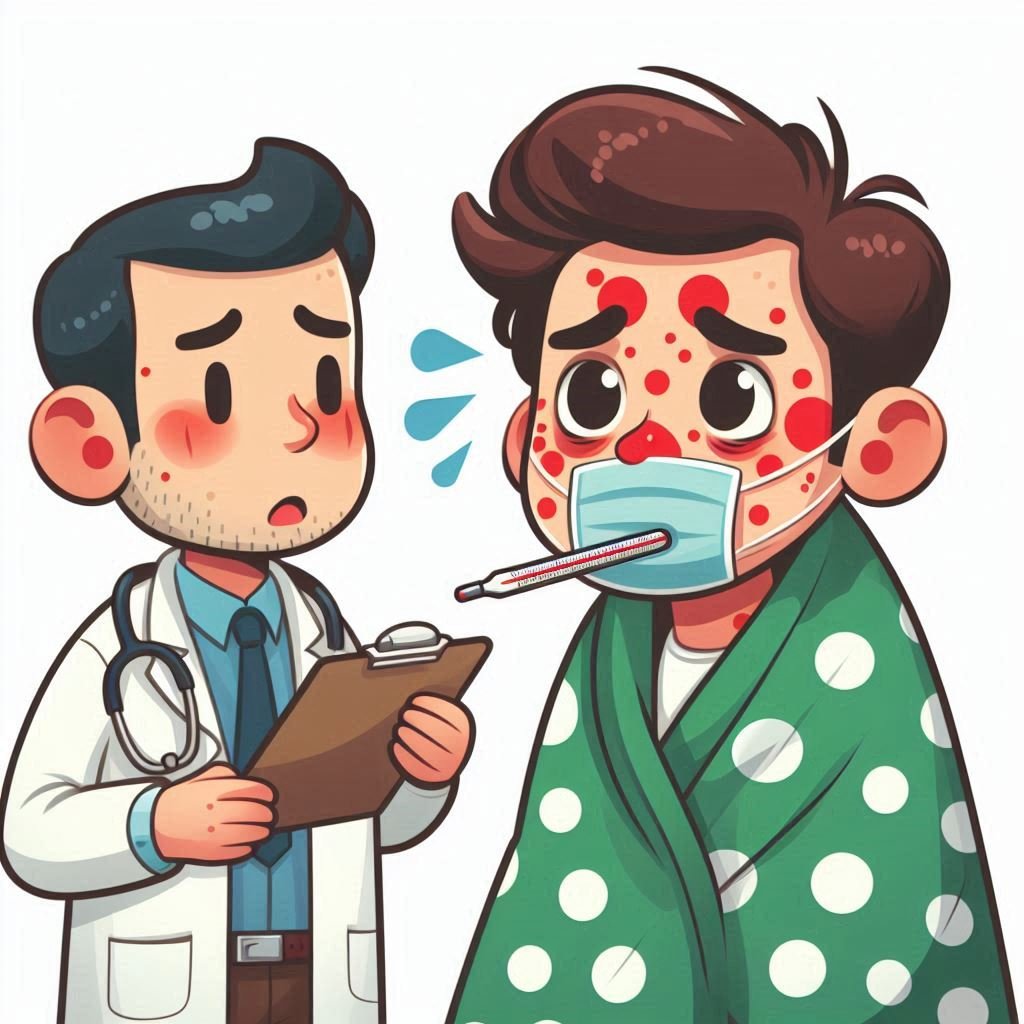Table of Contents
Smallpox

Small Pox Virus
(Variola Virus)
Introduction:
Smallpox is a disease caused by a variola virus. This virus infects the cells badly. The virus starts multiplying as soon as it enters the cells of the body, which causes small pox infection.
The Historical Impact of the smallpox:
Smallpox is known as one of the most dreaded diseases in history. It is such a terrible disease that killed many innocent people. Millions of people were confined to their homes due to this contagious disease because it was an untouchable disease that spread by touch. This disease made many people ugly and disfigured. Smallpox has existed historically for at least three thousand years. Which has been proven in history by Egyptian mummies and ancient writings and there are also evidences against it.
There are examples of the destruction of small pox in history. It has destroyed many civilizations and empires. Due to this smallpox disease, not only people died all over the world, but this disease was also the cause of social and economic destruction.
The outbreaks of smallpox spread fear and terror in famous countries like Europe, Asia and Africa. This disease was common in these countries. The disease was first introduced to the Americas by the early settlers. In the 16th century, this disease was a disease for the indigenous peoples of Europe, Asia, Africa and America that they had never faced before. As a result of which large scale deaths occurred.
Mortality rate:
The infectious disease of small pox spread its terror everywhere in history. Due to this disease, many people had to lose their lives. The death rate due to smallpox depended on the different strains of the smallpox virus. The death rate of people who were infected with severe variola virus was about 30%. While those who suffered from the minor virus had a death rate of up to one percent, which was relatively low.
The smallpox virus had a high mortality rate among children. The disease was spreading more rapidly among children than among adults. That’s because children’s immune system is a little weaker than adults, children are also physically weaker than adults. In addition, smallpox mortality rates were higher in populations where smallpox vaccination had not reached. Also, smallpox death rates were higher in areas where residents first encountered the disease, such as the United States. In such areas and settlements, the mortality rate was sometimes so high that it exceeded 50 percent.
Campaign to eradicate small pox:
In the 19th and 20th centuries, the World Health Organization started a special campaign for the global spread of vaccination. The campaign used various methods of mass vaccine distribution on a global scale so that the vaccine could reach every affected person around the world. The last case of smallpox was reported in 1977. After which extensive strict surveillance was carried out. After this strict surveillance, the WHO finally ensured the eradication of smallpox in 1980 after all the suffering and destruction.
This deadly and contagious disease was eradicated through a vaccination campaign. It was a testament to the power and success of international collaboration and science innovation. After the disease was completely defeated and controlled, it became the first disease in the world to be completely controlled and eradicated. The people who survived the disease were severely disfigured. Some lost their eyesight and became blind. While some people lived with the terrible effects of smallpox such as physical disabilities and facial scars.
Symptoms of smallpox:
The symptoms of small pox disease are different in every person, which appear in people infected with small pox virus. The nature of these symptoms depends on whether the infected person is infected with the minor variola virus or the major variola virus.
The symptoms of this disease are listed below:
Early symptoms:
Small pox disease begins with high fever. Which leads to severe pain in the body, fatigue and weakness. Also, severe headache and severe body pain are among the early symptoms of small pox.
Acute symptoms:
A few days after these initial symptoms, a dangerous rash appears. Which starts to happen all over the body, arms, legs, face and all other parts of the body. This rash is of different types. This rash later takes the form of flat red spots, raised lumps, watery blisters, pus-filled boils, pustules. These blisters, boils, bumps later harden and dry up. Which eventually leaves deep pits and scars.
Transmission of smallpox:
Smallpox is an epidemic disease. Which is usually easily transferred from one person to another. How small pox is spread The modes of transmission are detailed below:
Direct contact:
Smallpox can spread more quickly through close proximity to infected people. The most common source of smallpox spread is respiratory droplets from infected individuals. That is, when a person infected with smallpox coughs or sneezes or talks to someone, the smallpox virus is present in the droplets from the nose or mouth of the infected person, which enters the body of another person.
Indirect contact:
Since small pox is an untouchable disease. By touching, the small pox virus remains for a long time in such places and on objects that have been in contact with people infected with small pox. Due to which transfer to other people becomes possible and easy.
Diffusion through the air:
Smallpox spreads like an epidemic through the air. The spread of this disease is more likely there. Where there are many people infected with smallpox, eg hospitals or crowded places. Apart from this, any closed places like house or school building etc. where the air circulation is not suitable. In such places small pox spread more widely. Because there is no fresh air circulation in such places. All people have mixed air and they are all breathing the same air.

Transition period:
The period of transmission of smallpox passes through three stages، which are as follows:
- The small pox virus does not show its effects immediately when it enters a person’s body. There is an incubation period of about 7 to 17 days. During this period, a person infected with smallpox is not contagious.
- People infected with the smallpox virus are contagious at this time. When symptoms of small pox begin to appear on him. These symptoms include the characteristic small pox rash. Which is proof that the small pox patient is infected now. The most contagious period of smallpox disease is in the first week after the smallpox rash appears.
- The infectious period of smallpox ends at this time. When the small pox-affected patient begins to shed scabs from the sores on his body. These scabs are a sign that the person infected with smallpox is no longer contagious and is recovering. These scabs continue to shed over a period of about two to three weeks.
vaccination of smallpox:
Before the smallpox vaccine was invented, a method known as variolation was used in ancient times. In this variolation method, the patient was deliberately infected with material from smallpox lesions so that he would develop a severe form of smallpox. Don’t be a victim and be safe from more danger. This procedure was common in Asia and Africa in ancient times. This method was introduced in Europe at the beginning of the 18th century. So that they can also use this method to improve the condition of smallpox patients. But this method was not very effective against smallpox.
In 1976, Edward Jenner, an English physician, invented a smallpox vaccine. This was an important time in history for the eradication of smallpox. Edward Jenner invented a cow and a vaccine. The vaccine invented by Jenner produced effective results against the smallpox epidemic. Jenner’s invention of the vaccine revolutionized the fight against smallpox during this period. Then later this vaccine became common. Due to which the small pox disease was completely controlled.
About Author
I’m Ayesha Iqbal, a student studying MBBS at Services Institute of Medical Sciences (SIMS) Lahore. I write about health for “GenZ Cares” because they care a lot about young people staying healthy. I do research and try new things to learn more about how to keep everyone feeling good. My articles focus on topics like nutrition, exercise, mental well-being, and ways to lead a healthier lifestyle. Through my writing, I aim to share valuable insights and practical tips that can make a positive difference in people’s lives.
Reviewed By

This article is reviewed by “Nashit Aliyan“, a certified Surgical Technologist from Government College University Faisalabad under section 2017-2021. I am 17A medical officer as well as Strategic and financial planning expert and Proficient in surgical field. Me and my team use the latest technology to perform complex surgical procedures. I recommend to “GenZ Cares” because they are really hardworking in their work and care a lot about youth to staying healthy.

2 thoughts on “A Quick Survey of Small Pox”